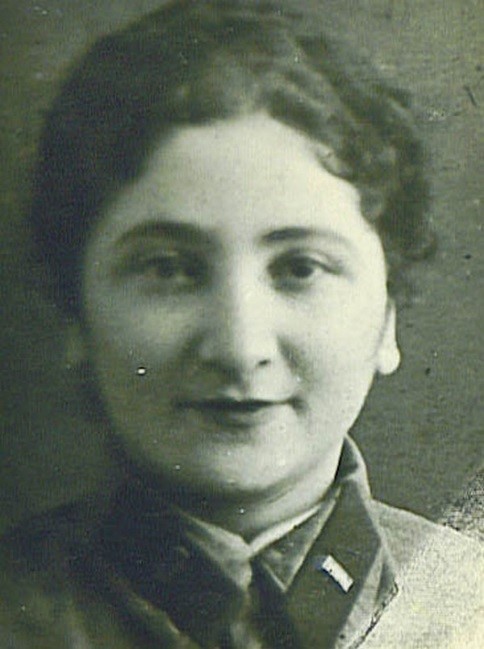Raisa Kerdman was born in 1918 in Zhmerinka, Ukraine, to a religious family. In 1930 her parents moved to the Crimea to work on a Jewish kolkhoz. Raisa refused to go with them and instead moved to join her sister, who was a dentist in Kharkov, in eastern Ukraine. Raisa graduated from school and then from a medical institute in Kharkov. Because her mother had fallen ill and could not work, every summer Raisa would travel to her parents in the Crimea and work on the kolkhoz.
Kerdman received her diploma on the days after the Soviet-German war began. Her first job was in Kremenchug (in central Ukraine), where she worked as a physician at the Kremenchug railway junction. When the front approached the town, Kerdman returned to Kharkov and, despite her exemption from military service as a railway employee, she volunteered for the Red Army. At the front she was assigned to a medical battalion (medsanbat) of the 175th Rifle Division – one of the most dangerous (and depressing) types of medical service during the war.
Raisa's parents failed to escape from the Crimea and were killed by the Nazis.
In May 1942 her division took part in the second battle for Kharkov, which was a catastrophe for the Red Army. Very many wounded soldiers arrived at the medsanbat, and Kerdman often had to stay at the operating table for 20 hours a day. One day an enemy mortar shell mangled her left foot. She was operated on at her own medsanbat and then sent to the rear. Kerdman spent six month in various hospitals and was released with a prosthesis. Nevertheless, she completed her medical education and after the war worked as an ophthalmologist in Kharkov: first as an assistant in the department of eye diseases at the Kharkov Medical Institute and, from 1969 – as a practitioner.
In 1991, Raisa Kerdman emigrated, settling in the USA, where her nieces lived. She lived in Providence, Rhode Island. Kerdman died in 2016 at the age of 97.







